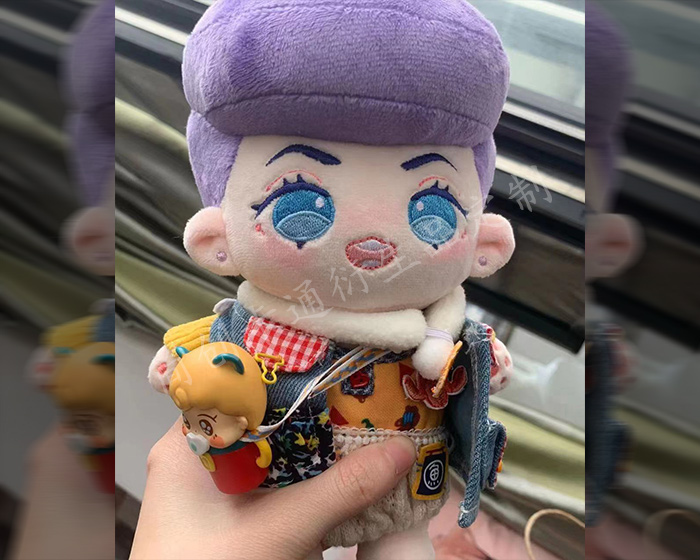Cleaning stuffed animals regularly is essential for maintaining their appearance, hygiene, and safety, especially in homes with children or pets. The frequency of cleaning can vary based on several factors, including usage, the environment, and the type of material. Here’s a comprehensive guide on how often to clean stuffed animals and why it matters.
1. General Cleaning Frequency
As a general rule, it’s advisable to clean stuffed animals at least every three to six months. This schedule helps remove accumulated dust, dirt, and allergens that can settle on the toys over time. For stuffed animals that are frequently used or cuddled, such as those that children sleep with, more frequent cleaning—about once a month—might be necessary. Regular cleaning not only keeps the toys looking fresh but also helps to mitigate health risks associated with allergens and germs.
2. Factors Influencing Cleaning Frequency
Several factors can affect how often stuffed animals need to be cleaned:
-
Usage: If a stuffed animal is used daily, especially for snuggling or play, it will likely need cleaning more often. Toys that are in constant contact with skin and saliva are more prone to developing odors and germs.
-
Environment: In dusty or high-allergen environments, such as homes with pets or smokers, stuffed animals may accumulate dirt and allergens more quickly. In such cases, a monthly cleaning routine can help maintain a healthier space.
-
Health Considerations: If someone in the household has allergies or asthma, it’s crucial to keep stuffed animals clean to reduce allergen exposure. Washing them more frequently can help minimize the risk of triggering allergies.
3. Signs That Stuffed Animals Need Cleaning
Beyond a scheduled routine, it's important to look for signs that stuffed animals need immediate cleaning. These signs include:
-
Visible Dirt or Stains: If you notice dirt, stains, or spots on the toy, it’s time for a cleaning.
-
Unpleasant Odors: If the stuffed animal develops a musty or unpleasant smell, it indicates that cleaning is necessary.
-
Allergen Buildup: If family members experience increased allergy symptoms, consider checking and cleaning the stuffed animals, as they can harbor dust mites and other allergens.
4. Cleaning Methods
When it comes to cleaning, there are various methods depending on the material and condition of the stuffed animal. For machine-washable toys, a gentle cycle with cold water and mild detergent is often effective. For delicate or non-washable items, spot cleaning or using sanitizing sprays can be sufficient. Always check care labels before washing to avoid damaging the toy.
5. Post-Cleaning Care
After cleaning, proper drying is crucial to prevent mold and mildew. Air drying is generally the safest method, and it’s important to ensure that the stuffed animal is completely dry before returning it to play.
Conclusion
In summary, stuffed animals should generally be cleaned every three to six months, with more frequent cleaning for heavily used toys or those in allergen-prone environments. By establishing a regular cleaning routine and being attentive to the condition of the toys, you can keep them hygienic and safe for continued enjoyment. Maintaining clean stuffed animals not only preserves their quality but also contributes to a healthier home environment for everyone.
The following are some examples of plush toys that our factory customizes for customers. Check out if there is one that you like best.
-
Custom Animal Plush
-
Cute Plush Doll
-
Custom Stuffed Animals
-
Plush Toy
-
Plush Dolls
-
Custom Stuffed Dolls
-
Custom Plush Toy
-
Cotton Dolls
-
Weighted Plush Toys
-
Cute Stuffed Animals
-
Custom Pet Stuffed Animal
-
Warmies Stuffed Animals
-
Weighted Stuffed Animal
-
Soft Toys
-
Plush Stuffed Doll
-
Custom Stuffed Dolls
-
Plush Maker
-
Bear Stuffed Toy
-
Anime Plush
-
Custom Stuffed Animal
-
Anime Plush
-
Custom Plush Toy
-
Personalised Stuffed Animal
-
Plush Animal Toys
-
Custom Plush Makers
-
Custom Plushies
-
Toy Manufacturer
-
Rag Doll Making
-
Custom Toys
-
Dog Plush Toys
-
Custom Rag Doll
-
Stuffed Animals
-
Custom Plush
-
Custom Plush Dolls
-
20cm Cotton Doll
-
Jojo Plush
-
Custom Doll
-
Jojo Doll
-
Large Plush Toys
-
15cm Cotton Doll
-
Dumpling Plush
-
Cotton Doll


























